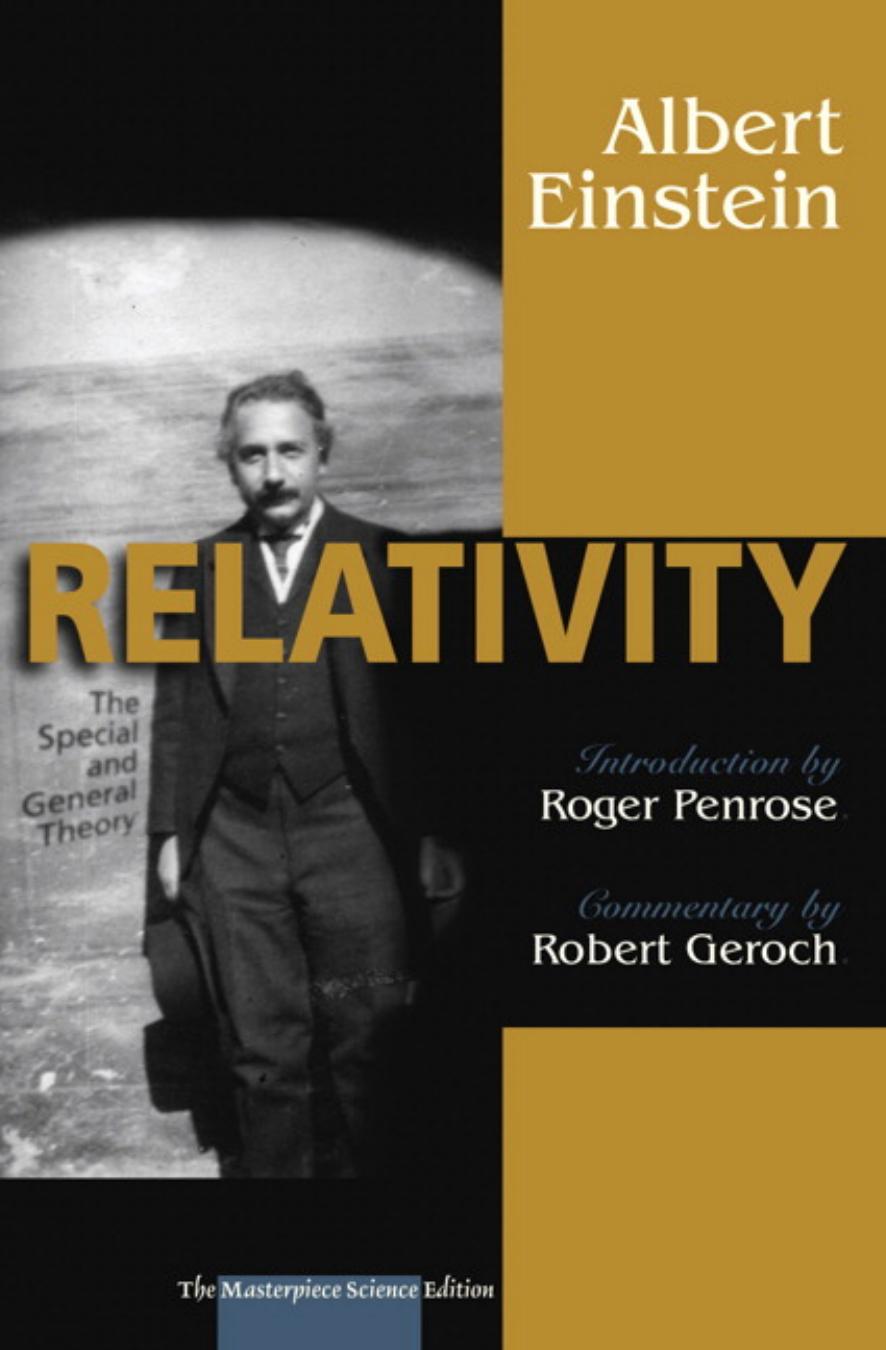Relativity: The Special and the General Theory by Albert Einstein

Author:Albert Einstein [Einstein, Albert]
Language: eng
Format: epub, azw3, pdf
Publisher: Princeton University Press
Published: 2015-06-15T23:00:00+00:00
The Field
In Newtonian mechanics, space and time play a dual rôle. First, they play the part of carrier or frame for things that happen in physics, in reference to which events are described by the space co-ordinates and the time. In principle, matter is thought of as consisting of “material points,” the motions of which constitute physical happening. When matter is thought of as being continuous, this is done as it were provisionally in those cases where one does not wish to or cannot describe the discrete structure. In this case small parts (elements of volume) of the matter are treated similarly to material points, at least in so far as we are concerned merely with motions and not with occurrences which, at the moment, it is not possible or serves no useful purpose to attribute to motion (e.g. temperature changes, chemical processes). The second rôle of space and time was that of being an “inertial system.” From all conceivable systems of reference, inertial systems were considered to be advantageous in that, with respect to them, the law of inertia claimed validity.
In this, the essential thing is that “physical reality,” thought of as being independent of the subjects experiencing it, was conceived as consisting, at least in principle, of space and time on one hand, and of permanently existing material points, moving with respect to space and time, on the other. The idea of the independent existence of space and time can be expressed drastically in this way: If matter were to disappear, space and time alone would remain behind (as a kind of stage for physical happening).
The surmounting of this standpoint resulted from a development which, in the first place, appeared to have nothing to do with the problem of space-time, namely, the appearance of the concept of field and its final claim to replace, in principle, the idea of a particle (material point). In the framework of classical physics, the concept of field appeared as an auxiliary concept, in cases in which matter was treated as a continuum. For example, in the consideration of the heat conduction in a solid body, the state of the body is described by giving the temperature at every point of the body for every definite time. Mathematically, this means that the temperature T is represented as a mathematical expression (function) of the space co-ordinates and the time t (Temperature field). The law of heat conduction is represented as a local relation (differential equation), which embraces all special cases of the conduction of heat. The temperature is here a simple example of the concept of field. This is a quantity (or a complex of quantities), which is a function of the co-ordinates and the time. Another example is the description of the motion of a liquid. At every point there exists at any time a velocity, which is quantitatively described by its three “components” with respect to the axes of a co-ordinate system (vector). The components of the velocity at a point (field components), here also, are functions of the co-ordinates (x, y, z) and the time (t).
Download
Relativity: The Special and the General Theory by Albert Einstein.azw3
Relativity: The Special and the General Theory by Albert Einstein.pdf
This site does not store any files on its server. We only index and link to content provided by other sites. Please contact the content providers to delete copyright contents if any and email us, we'll remove relevant links or contents immediately.
The Complete Stick Figure Physics Tutorials by Allen Sarah(6638)
Secrets of Antigravity Propulsion: Tesla, UFOs, and Classified Aerospace Technology by Ph.D. Paul A. Laviolette(3450)
Thing Explainer by Randall Munroe(3328)
The River of Consciousness by Oliver Sacks(2992)
The Order of Time by Carlo Rovelli(2714)
I Live in the Future & Here's How It Works by Nick Bilton(2524)
How To by Randall Munroe(2476)
A Brief History of Time by Stephen Hawking(2474)
The Great Unknown by Marcus du Sautoy(2186)
What If?: Serious Scientific Answers to Absurd Hypothetical Questions by Randall Munroe(2170)
Blockchain: Ultimate Step By Step Guide To Understanding Blockchain Technology, Bitcoin Creation, and the future of Money (Novice to Expert) by Keizer Söze(2138)
Midnight in Chernobyl by Adam Higginbotham(2078)
Networks: An Introduction by Newman Mark(1998)
The Meaning of it All by Richard Feynman(1909)
Easy Electronics by Charles Platt(1864)
The Tao of Physics by Fritjof Capra(1850)
When by Daniel H Pink(1777)
Midnight in Chernobyl: The Untold Story of the World's Greatest Nuclear Disaster by Adam Higginbotham(1775)
Introducing Relativity by Bruce Bassett(1755)
